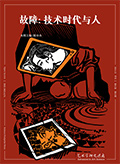

理解“不对称时代”的艺术, 意味着接受艺术创作和艺术家思考的局限性, 艺术不可能再拥有某种全面的企划, 而是必须立足于事物, 立足于我们和世界之间的空隙。这种空隙产生了新的关系, 那就是波动。波动意味着在知识和事物之间循环往返的运动, 它已经成为今天我们的一种基本生态, 即事物总在退离, 它不等于事物诸性质的集合, 因此我们不可能穷尽事物本身。就此而言, 艺术创作应该放弃远望, 并以切近的方式寻找事物的空隙, 承认事物是无法被捕获和占有的。艺术创作应该放弃因果假设, 更多地重视偶然的机制, 并且明确诸事物和艺术创作者之间本质上的共生关系。如果这种创作是可能的, 我们就可以称其为“波动纪”的艺术。
Understanding the art of the “asymmetric era” requires acknowledging the limitations inherent in both artistic creation and the artist’s mindset. Art can no longer follow a comprehensive plan; instead, it must be grounded in concrete realities and the gap between ourselves and the world. This gap creates a new relationship, which is fluctuation. Fluctuation refers to the cyclical interplay between knowledge and objects. It has become a fundamental aspect of our contemporary ecosystem—one in which things are constantly withdrawing from view. It is not merely a sum of a thing’s properties, which means we can never fully grasp the essence of the thing itself. In this sense, artistic creation should move away from detached contemplation and instead engage more directly with the gaps within things, recognizing that they cannot be fully grasped or possessed. Artistic creation should abandon causal assumptions, place greater emphasis on the workings of chance, and fully acknowledge the fundamental symbiotic relationship between things and the artist. If such a mode of creation is possible, we might call it the art of the Fluctuatocene.